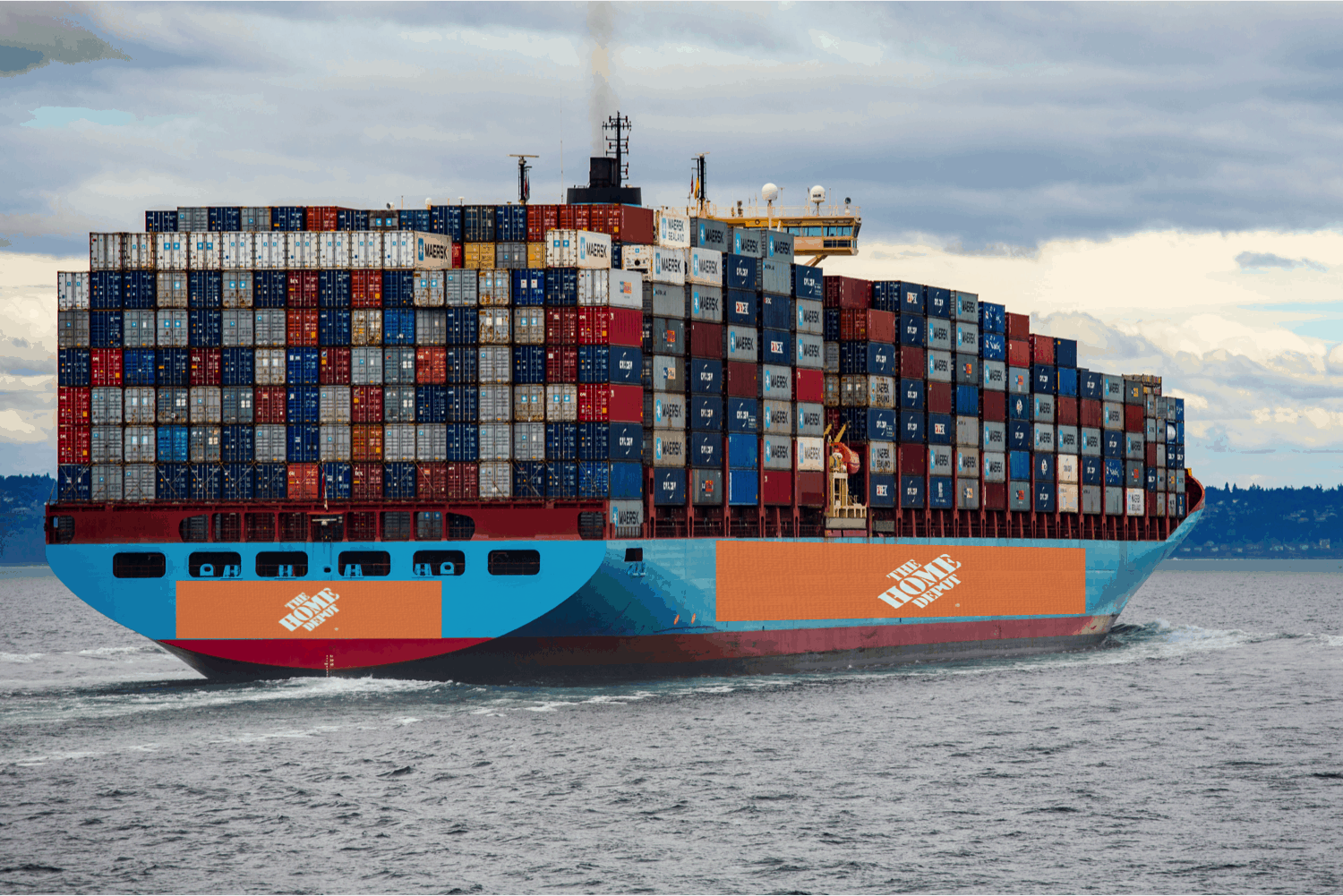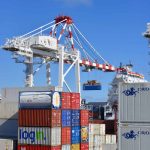Could This Move Disrupt the Ocean Shipping Business?
An intriguing story broke in the international shipping industry at the start of this week. A shipper made a move that has the potential to be disruptive to ocean carriers, who run the world’s ocean freight industry.

Greg Miller reported in an American Shipper article:
One of America’s largest retailers, Home Depot (NYSE: HD), has just reserved a ship for its sole use.
Yes, it’s just one shipper reserving one ship. The length of time the ship is reserved for is unknown, along with other details like the ship’s name or if Home Depot is working with a freight forwarder intermediary, according to the article. However, this move makes it clear that things can’t continue as they have been when it comes to ocean freight carriers’ services and the freight rates they’re charging.
Miller writes, “The move underscores just how tight trans-Pacific capacity has become and how worried retailers are about getting goods on shelves at any cost.” I think it underscores more than that.
Freight Rates Are Too High
First, freight rates are too damn high. I don’t know how many articles I’ve written over the last year specifically about or containing sections about record freight rates, soaring freight rates, or fees and premiums shippers are being hit with. I do know that I could be writing another one of those articles right now. As a matter of fact, on Friday, Miller, who wrote the article about Home Depot chartering a ship exclusively for their own cargo, wrote yet another article about freight rates skyrocketing to new record heights, with upward rate momentum accelerating.
He reported there had been about a 20% surge in Asia to East Coast freight rates per FEU (forty-foot equivalent units) over the previous few days, resulting in the highest freight rates ever and a 224% increase year on year. His source on that was Freightos. He also shared S&P Global Platts daily assessment from the day before (Thursday) that North Asia to U.S. East Coast rates on Freight All Kinds (FAK) was up 152% year on year.
For Asia to West Coast, Freightos showed freight rates per FEU to be up 194% year on year and S&P Global Platts’ North Asia to West Coast North America FAK rates to be up 172% year on year, according to Miller’s American Shipper article.
Perhaps the most alarming moment in the article was the following:
“We haven’t seen the worst of it — $20,000 [per FEU] all-in rates to the East Coast are coming,” predicted Steve Ferreira, CEO and founder of Ocean Audit.
This is just more bad news for shippers, who are more than tired of seeing freight rates hit new record highs. It’s also bad news U.S. consumers, who are already dealing with inflation; higher freight rates add to that by forcing retailers to charge more for goods in order to remain profitable.
Profitability isn’t a problem for carriers – at least not anymore. While ocean freight carriers used to struggle with profitability, these incredibly high freight rates they’re charging are helping them have record-breaking revenue. Carriers are making billions.
However, I’ve been saying that carriers can’t push freight rates much higher without serious backlash from shippers. In fact, there already has been some backlash for a while from shippers, who, last year, accused carriers of profiteering off the pandemic. Home Depot making the move to get their own ship is, however, a sign of a bigger backlash that could be costly for carriers.
Carrier Reliability Is Abysmal
While carriers have been charging much more for shipping goods around the world, their services have not improved. In fact, carrier reliability has gotten worse.
Let’s face it, ocean freight carriers have never been known for their reliability. However, since the pandemic hit, carrier reliability fell to new lows. Back in December, I got into this issue in a blog post about carriers introducing “slidings” to apparently improve in this area:
Last month, Asia to U.S. container ships failed to arrive on time over 70% of the time. Worldwide, ocean freight carriers only had their container vessels on schedule about half the time. Those stats comes from a Sea-Intelligence service reliability index cited in a Bloomberg article I quoted in our last blog post, warning shippers, especially U.S. importers, to expect delays and fees.
Not all of that is the carriers’ fault. Severe port congestion is a major factor in making ships late. Of course, carriers also played a role in creating the congestion with their shifting to bigger and bigger ships and blanking (cancelling) hundreds of sailings last year, which helped create container shortages (and directly decreased reliability) that contribute even now to congestion. However, carriers aren’t responsible for shipping demand creating a year of near record to record volumes.
Of course, it’s not just a question of ships not arriving on times. Shippers are often struggling with getting space at all for their cargo on sailings.
Will Other Shippers Follow Home Depot’s Lead?
After facing these horrific services and historic freight rates (even though Home Depot would deal more in the direct contract space with carriers than the spot rate market), Home Depot has decided it’s better for its business to go out and get a whole ship devoted solely to its goods. That’s a significant investment, especially as getting ships isn’t particularly easy or cheap during this surge in shipping we’ve been seeing over the last year.
Home Depot, of course, must think the cost is worth it. The question is whether other shippers will do or try to do likewise.
Obviously, a move like this would not be an option for small to medium shippers. However, the actions of the big shippers would likely have an impact on the smaller ones. If your Best Buys, Walmarts, and Targets of the world decided to move away from the carriers with large quantities of their goods being sailed on ships of their own, carriers would feel the impact. To induce shippers to keep more goods with them, carriers would need to improve upon the rates and reliability/service they offer.
Such a loss in cargo volume to carriers, as a decrease in demand is wont to do, should create downward pressure on rates regardless of carrier attempts to woo back their biggest customers. Such downward freight rate pressure should trickle to the medium and small shippers. But what could be even more interesting than that is if the large shippers, chartering their own ships, started selling some of their space to smaller shippers – not that Home Depot is doing that.
If such trends as BCOs getting their own ships and selling space on them were to actually happen, it could be devastating for carriers. The potential for disruption to the ocean freight carriers’ business is substantial. When businesses in an industry operate in a self-first fashion, increasing prices while decreasing service, eventually, customers will find alternate options. Carriers should consider what’s happening – as well as potentialities – carefully.




